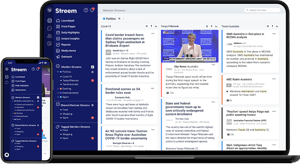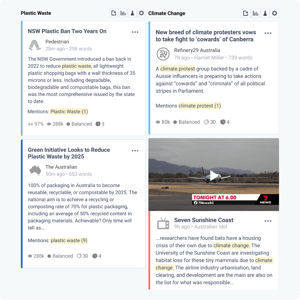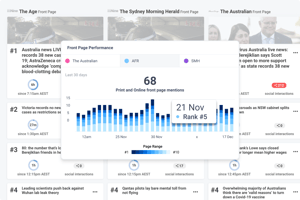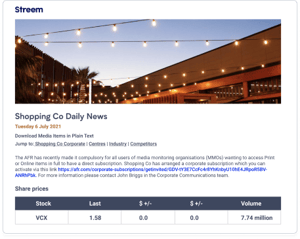Media Monitoring
Streem delivers comprehensive and realtime Print, Online, TV, Radio, Podcast, and Social media monitoring.
Used by 1000+ of Australia’s largest corporate and government organisations and available on Desktop, Tablet and Mobile devices, Streem enables media teams to monitor, analyse, and respond as news happens.
Comprehensive and in realtime
Monitor, analyse and respond to media coverage as-it-happens. On Desktop, Tablet and Mobile, Streem arms you with the content, insights, and tools to manage your organisation’s media.
Instantly add keywords, stream TV and Radio live or see Print and Online behind the paywall across millions of sources in Australia, New Zealand and around the world.

Our team runs 24/7 and combines the best technology and people to reliably deliver all day, every day.
Streem’s Sydney, Melbourne, and Canberra based Account Managers are communications professionals providing dedicated support via phone, email and on-site.
Mention Streams
Mention Streams are unique to Streem, enabling media teams to instantly add and remove keywords around topics, brands, competitors, industries, and issues on-demand. Backed by realtime media coverage, Mention Streams surface comprehensive content across national, metropolitan, regional and specialist media in a single view, with the tools to filter news, derive insights, and build reports instantly.

Respond to events as they unfold
- Our Instant Insights allows you to compare data from multiple search queries simultaneously.
- Compare key topics in the news, or understand how you’re tracking against competitors.
- Set up multiple searches and save them for next time to have a dashboard at your fingertips.
- Alter the date range as you need, to see how coverage has evolved over time.
Added insights
Enhanced with unique data and insights exclusive to Streem, track the evolution of digital front pages, social shares and editorial decision-making across Australia’s biggest publishers. Front Pages and Daily Highlights enable a live view of the major stories leading the news agenda.

Daily Email Reports
Receive curated reports daily for distribution throughout your organisation, surfacing key Print, Online, TV, and Radio media in a single, branded email report. With your key stakeholders front and centre, Streem’s curated Daily Email Reports are built and distributed by a team of editors, applying the human touch and making informed decisions about the content that matters most to your organisation.
